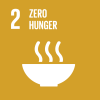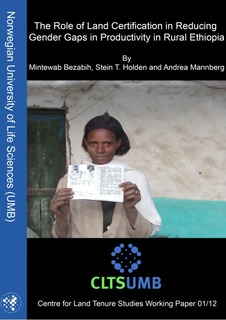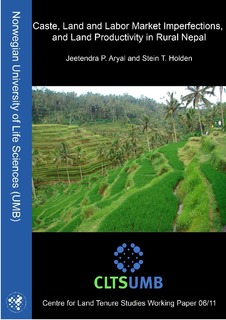
Volume of production per labour unit by classes of farming/pastoral/forestry enterprise size
Last updated on 1 February 2022
This indicator is currently classified as Tier II. The Food and Agriculture Organization of the United Nations (FAO) is the Custodian agency for this indicator.
Unit of measure: Value of production per labour day of small-scale food producers (in constant PPP USD 2011)
Why is this indicator important?
Small-scale food producers constitute the majority of food producers in many countries. Accordingly, enhancing sustainable food production systems and resilient agricultural practices of small-scale producers is important to combat hunger. Developing efficient and robust food production programs to boost agricultural productivity of small-scale producers is essential to maintain food supplies, increase incomes for poor and vulnerable groups, and feed the planet. It also contributes to strengthening rural development. Together with indicator 2.3.2., it defines small-scale producers and provides insights into how much they earn and produce.
By tracking the volume of production per labour unit by classes of farming/pastoral/forestry enterprise size, data collected for indicator 2.3.1 enables governments to shape, prioritize, and invest in policies and measures that effectively boost agricultural productivity, drive economic growth, and eliminate hunger in particular for small-scale food producers, including women, Indigenous Peoples, family farmers, and pastoralists.
How is the indicator measured and monitored?
Data and information on rural income, livelihoods, and labour inputs is limited in many countries. Moreover, information is usually collected on household level instead of food production unit level.
According to the metadata brief, sources of information are either agricultural surveys, or agricultural modules in integrated household surveys (e.g., LSMS-ISA) organized by the national statistical agencies, with the necessary support from the World Bank, FAO and other international agencies. FAO has been working on computing the indicator for eight developing countries in Sub-Saharan Africa based on data collected from the Living Standards Measurement Study-Integrated Surveys on Agriculture (LSMS-ISA) surveys. Results have not been disseminated yet. In collaboration with IFAD and the World Bank, FAO also promotes the Agricultural and Rural Integrated Surveys project (AGRISurvey) which aims to assist countries to collect relevant data on an annual basis.
By Anne Hennings, peer-reviewed by FAO.
Official indicator data
Volume of agricultural production of small-scale food producer in crop, livestock, fisheries, and forestry activities. The indicator is computed as a ratio of annual output to the number of working days in one year.
* Select "year" below to see the most recent data for more countries.
Other related indicators on Land Portal
In addition to the official indicator data, the following indicators provide information concerning the importance of agriculture in a given country or the distribution of land.
| Indicator | Min-Max Number of years |
Countries / Obs | Min / Max Value |
|---|---|---|---|
| Average size of holdings (ha) | |||
| Employees in Agriculture - Female (% of female employment) | |||
| Employment in Agriculture (% Total Employment) |
We Are the Solution: African Women Organize for Land and Seed Sovereignty
Written by Simone Adler and Beverly Bell
Published: 10 November 2015
From an Interview with Mariama Sonko
Mariama Sonko is a farmer and organizer in Casamance, Senegal. She is the National Coordinator of We Are the Solution, a campaign for food sovereignty led by rural women in West Africa.
How community-based organisations promote climate-smart practices in Kenyan drylands
Smart farming innovations and financial services are now more easily accessible to smallholders in eastern Kenya. Farmers in the area regularly meet in community-based organisations to share crucial information and knowledge.
Paginación
The role of land certification in reducing gender gaps in productivity in rural Ethiopia
This paper analyses the impact of a low cost and restricted rights land certification program on the productivity of female-headed households. The analysis is based on plot level panel data from the East Gojjam and South Wollo Zones in the Amhara region of Ethiopia.
Yield Impact of Irrigation Management Transfer : Story from the Philippines
Irrigation management transfer is an
important strategy among donors and governments to
strengthen farmer control over water and irrigation
infrastructure. This study seeks to understand whether
irrigation management transfer is meeting the promise of its
commitments. The authors use data from a survey of 68
Caste, land and labour market imperfections, and land productivity in rural Nepal
This paper provides new evidence on the caste-related land productivity differential and its explanations in rural Nepal using household plot panel data. Low-caste households are found to have significantly higher land productivity on their owner-operated plots as compared to high-caste households.
Effects of Watershed Vegetation on Tributary Water Yields During the Wet Season in the Heishui Valley, China
The relationships between water yields of tributaries and coverage of different vegetation types in the corresponding sub-watersheds were investigated during the wet season in the Heishui River Valley, located in the upper portion of the Yangtze River in western China.
Effects of No-Tillage Production Practices on Crop Yields as Influenced by Crop and Growing Environment Factors
This paper evaluated differences between yields of no-tillage compared to conventional or reduced tillage and their associated downside risk. Six crops were evaluated along with how those yields and risks differed by various environmental factors such geographic location, precipitation, soil type and how long the practice had been used.
Paginación
![]()

By 2030, double the agricultural productivity and incomes of small-scale food producers, in particular women, indigenous peoples, family farmers, pastoralists and fishers, including through secure and equal access to land, other productive resources and inputs, knowledge, financial services, markets and opportunities for value addition and non-farm employment
Indicator details
The indicator is conceptually clear, has an internationally established methodology and standards are available, but data is not regularly produced by countries.
Key dates:








